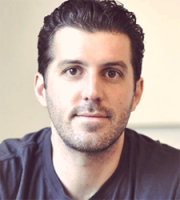Brian has held leadership roles in professional services firms for over 20 years, starting in financial services, and migrating to technology consulting services more than 17 years ago. He has held senior leadership roles in Idea/Astadia, Tata Consultancy Services, and Appirio/Wipro, and now is Vice President, Digital and Product Engineering for Randstad Digital. His experience includes growing boutique consultancies as well as global technology practices within leading system integrators, allowing him to use his experiences and industry best practices for business operations, project delivery, and people leadership. Brian leads with empathy and a focus on attracting and retaining world-class talent…fueled by a commitment to generate positive results for the customers he serves and in the lives of the people he works with.
Why are you passionate about helping people-based businesses?
I am passionate about services businesses because people are at the core of them. I believe that the secret to gratitude and contentment lies in helping other people –to discover their passions, develop their skills, grow their careers and achieve their goals.
You have experience building and executing workforce planning programs for many different firms. What advice would you give to leaders looking to bring this concept into their organization?
Workforce planning marries the organization’s strategic business plans with the people necessary to achieve those goals, along with the tactical plans to achieve future workforce requirements. This is essential to ensure that you have the right people, with the right skills, in the right locations, at the right time in order to meet your financial and business plan targets.
One piece of advice for those just getting started is to “just do it”. Don’t wait for your process or tools to be perfect, but rather start with something, and then iterate and continuously improve your model and your process over time. Don’t let perfection get in the way of “good enough”.
Balancing delivery excellence, talent growth and financial metrics isn’t easy. What advice would you give to delivery leaders trying to achieve this delicate balance?
The reality for most organizations is that financial metrics are often viewed as the most important of these three priorities. However, in order to achieve sustainable, profitable growth from a financial standpoint, delivery excellence and talent growth are critical. Without delivery excellence, organizations spend too much time and resources obtaining new customers rather than extending and expanding the relationships with their existing customer base. Without talent growth, organizations spend too much time and resources replacing and acquiring new talent rather than growing the skills and careers of their existing workforce. My advice is to pragmatically focus on creating and maintaining enthusiastic employees and optimal customer experiences, and allow the financial metrics to show the results of these efforts.
Delivery teams are more spread out than ever. What are a couple tips for building global delivery teams that share a common culture and provide a consistent customer experience?
Global delivery teams have become the norm for technology services organizations, yet many companies still struggle with building global teams that actually work as envisioned. The best global organizations recognize that employees from different countries and cultures work differently, and are able to celebrate these cultural differences.
Start by training team members on these cultural differences and ways of working to create more understanding and empathy, and highlight the common goals, common values, and benefits of a global team. Recognize and celebrate local holidays, take into consideration language barriers, cultural differences, and the ways work is performed, and get to know global team members on a personal level. Avoid the use of “us” vs. “them”…or better yet, make everyone part of “us”.
Managing a global team can be challenging. However, giving team members a sense of shared purpose, promoting open communication and empathy, and using collaborative technology can create an atmosphere of trust and respect.







